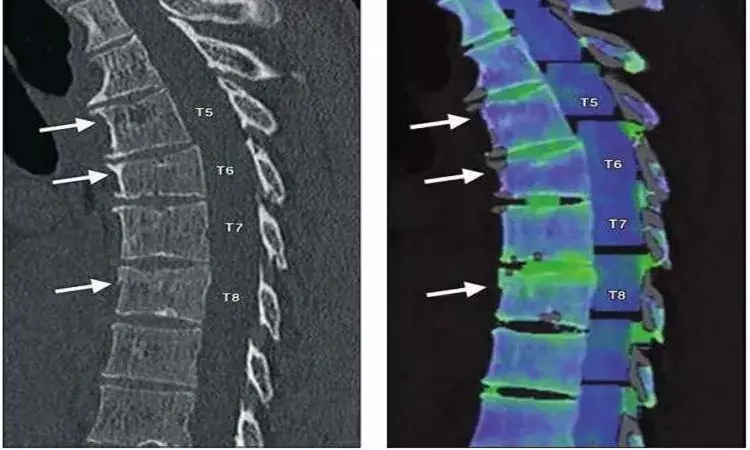- Home
- Medical news & Guidelines
- Anesthesiology
- Cardiology and CTVS
- Critical Care
- Dentistry
- Dermatology
- Diabetes and Endocrinology
- ENT
- Gastroenterology
- Medicine
- Nephrology
- Neurology
- Obstretics-Gynaecology
- Oncology
- Ophthalmology
- Orthopaedics
- Pediatrics-Neonatology
- Psychiatry
- Pulmonology
- Radiology
- Surgery
- Urology
- Laboratory Medicine
- Diet
- Nursing
- Paramedical
- Physiotherapy
- Health news
- Fact Check
- Bone Health Fact Check
- Brain Health Fact Check
- Cancer Related Fact Check
- Child Care Fact Check
- Dental and oral health fact check
- Diabetes and metabolic health fact check
- Diet and Nutrition Fact Check
- Eye and ENT Care Fact Check
- Fitness fact check
- Gut health fact check
- Heart health fact check
- Kidney health fact check
- Medical education fact check
- Men's health fact check
- Respiratory fact check
- Skin and hair care fact check
- Vaccine and Immunization fact check
- Women's health fact check
- AYUSH
- State News
- Andaman and Nicobar Islands
- Andhra Pradesh
- Arunachal Pradesh
- Assam
- Bihar
- Chandigarh
- Chattisgarh
- Dadra and Nagar Haveli
- Daman and Diu
- Delhi
- Goa
- Gujarat
- Haryana
- Himachal Pradesh
- Jammu & Kashmir
- Jharkhand
- Karnataka
- Kerala
- Ladakh
- Lakshadweep
- Madhya Pradesh
- Maharashtra
- Manipur
- Meghalaya
- Mizoram
- Nagaland
- Odisha
- Puducherry
- Punjab
- Rajasthan
- Sikkim
- Tamil Nadu
- Telangana
- Tripura
- Uttar Pradesh
- Uttrakhand
- West Bengal
- Medical Education
- Industry
Dual-energy CT in ED linked to better diagnoses, less follow up: AJR study

Leesburg, VA - Researchers have found in a new study that Dual-energy CT (DECT) added value to routine interpretation of emergency department (ED) imaging studies by increasing radiologists' diagnostic confidence, leading to a reduction in downstream imaging and associated costs.Additional information acquired from the scans reduces follow-up imaging and produces cost savings. The findings of the study have been published in the American Journal of Roentgenology (AJR).
William D. Wong of Vancouver General Hospital and colleagues queried his institution's radiologic information system for all DECT studies performed in the ED between January 1, 2016, and December 31, 2016. The team then sorted CT examinations into five body systems--head and neck, chest, abdomen and pelvis, spine, and musculoskeletal--and a board-certified radiologist, not initially involved in reading these cases, reviewed the corresponding reports for mentions of dual-energy or spectral examination as part of the study interpretation.
To determine the impact of DECT on downstream imaging, studies in which DECT was mentioned in the report were read again in a randomized double-blind manner with the mixed image datasets only, which simulate conventional CT images.
The difference between the numbers of follow-up studies recommended after conventional CT and DECT was converted into U.S. dollars via the U.S. Centers for Medicare & Medicaid Services Physician Fee Schedule and 2019 Current Procedural Terminology codes to estimate a projected cost benefit due to any reduction in follow-up imaging.
"Among the 3,159 cases, use of dual energy or spectral analysis potentially altered management in 298 (9.4%) cases, resulted in confirmation of suspected observations and increased diagnostic confidence in 455 (14.4%) cases, provided relevant additional information on an observation in 174 (5.5%) cases, resulted in characterization of an incidental finding in 44 (1.4%) cases, and was mentioned as being noncontributory in three (0.09%) cases." Wong et al. determined.
In terms of the five body systems they categorized, the musculoskeletal system accounted for the greatest number of studies wherein DECT potentially altered management (266/298 cases)--the most common use to confirm gout (185/266).
And although DECT was not noted in 2,272 reports (71.9%), compared with conventional CT alone, DECT findings avoided 162-191 recommended follow-up MRI examinations, 21-28 CT examinations, and 2-25 ultrasound examinations.
Meanwhile, DECT findings did prompt one additional recommended interventional angiography procedure, one ventilation-perfusion scan, and one imaging-guided biopsy.
Ultimately, for the Vancouver General ED in the year 2016, "DECT findings led to a decrease in recommended follow-up imaging examinations totaling an estimated $52,991.53-61,598.44," Wong and colleagues concluded.
Acknowledging a future need to evaluate how referring clinicians adapt to DECT, as well as how much they trust any added value, the authors of this AJR article added that Vancouver General has since completed the implementation of DECT acquisition for all CT examinations performed in the ED.
https://www.ajronline.org/doi/10.2214/AJR.19.22357
Hina Zahid Joined Medical Dialogue in 2017 with a passion to work as a Reporter. She coordinates with various national and international journals and association and covers all the stories related to Medical guidelines, Medical Journals, rare medical surgeries as well as all the updates in the medical field. Email: editorial@medicaldialogues.in. Contact no. 011-43720751
Dr Kamal Kant Kohli-MBBS, DTCD- a chest specialist with more than 30 years of practice and a flair for writing clinical articles, Dr Kamal Kant Kohli joined Medical Dialogues as a Chief Editor of Medical News. Besides writing articles, as an editor, he proofreads and verifies all the medical content published on Medical Dialogues including those coming from journals, studies,medical conferences,guidelines etc. Email: drkohli@medicaldialogues.in. Contact no. 011-43720751


